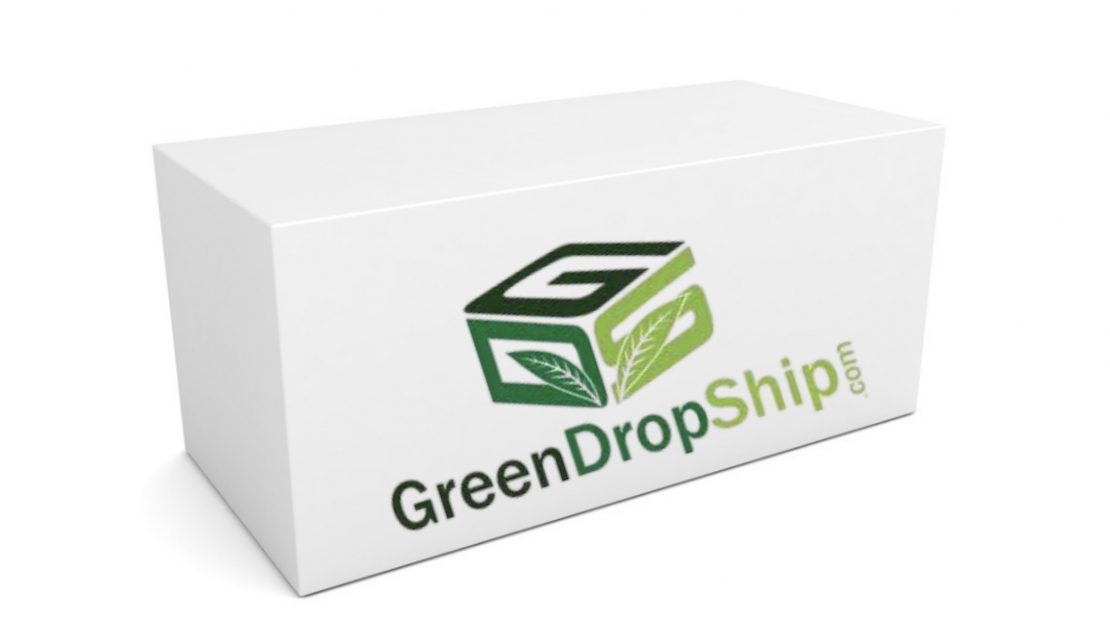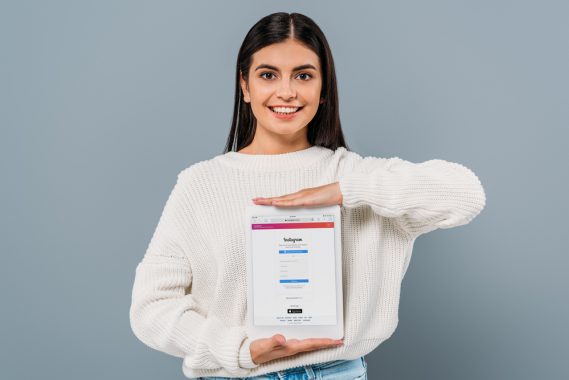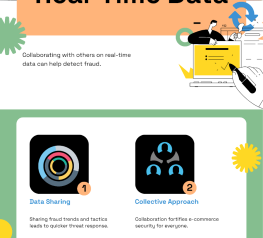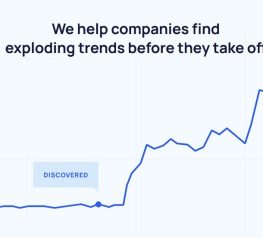How To Create Instagram Ads For Dropshipping That Convert
Learning how to sell on Instagram offers e-commerce entrepreneurs an amazing opportunity to reach their target customer and make sales. Instagram’s popularity, combined with its focus on visual content, means that Instagram ads for dropshipping can find a receptive audience of buyers.
In fact, according to a recent report, 75 percent of Instagram users take action, such as visiting a website or making a purchase, after looking at Instagram ads. If you’re not leveraging your Instagram account to boost conversions, you could be leaving money on the table!
Want to know more? We’ll tell you how to set-up your Instagram account (the right way) and start using ads. We’ll also share our top ten tips for creating ads that get shoppers to click and buy.
Why Run Instagram Ads For Your Dropshipping Store
Advertisers love Instagram, and its one billion+ active users love brands! Let’s take a look at some of the stats.
- 200 million + Instagrammers visit at least one brand profile daily.
- Most Instagram users (60%) say they discover new products on Instagram.
- 90% of Instagrammers follow at least one brand.
Instagram is a visual content platform that lends itself to e-commerce because shoppers like to SEE products before they buy. And users on Instagram are there specifically to scroll through images.
The trick for dropshippers is to find ways to showcase your products so that they blend seamlessly into your target customer’s Instagram feed. You need to know your niche audience, and create imagery that will resonate with their lifestyle.
Luckily Instagram has a host of formats, filters, tools, and features that will allow you to punch up your photos or videos to help you tell your product’s story!
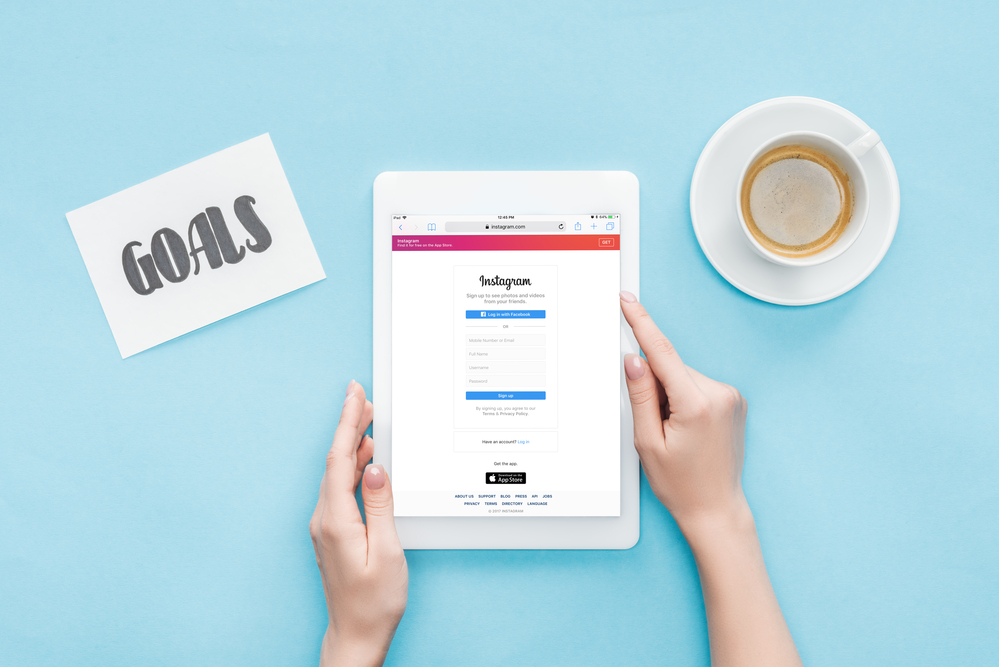
How To Start Using Instagram Ads
Instagram ads are posts or Stories that a business pays to promote to users’ Instagram feeds. They can look just like regular Instagram posts, but they’re identified by a “Sponsored” label. They almost always include a call-to-action button to drive traffic or conversions.
In this section, we’ll cover the five (5) basic steps of setting up an Instagram account and creating an ad campaign for your dropshipping store that converts. For business owners that want to do a deeper dive into specific details of the ad set-up process, you can check out this Complete Instagram Ad Guide.
Step 1: Create A Business Account
If you want to run advertising campaigns on Instagram, you’ll need a business account. A regular ol’ personal account just won’t cut it.
If you have a personal account already where you’ve been promoting your online store and getting some traction, don’t worry. You can easily convert it to a business account. But before you start running Instagram ads for dropshipping, you need to make the switch.
With an Instagram business profile, you can see real-time metrics on how your stories and promoted posts perform, get insights into how followers are interacting with your content, and unlock features available only to businesses that make it easier to get noticed and drive sales.
Within the app, find settings, then scroll down to Switch to Business Account. Be sure your profile is set to public. If your Instagram account is private, you can’t convert it into a business account.
Once your business account is opened, you can add in pertinent information like your contact info and web address. Then your account is ready to go!
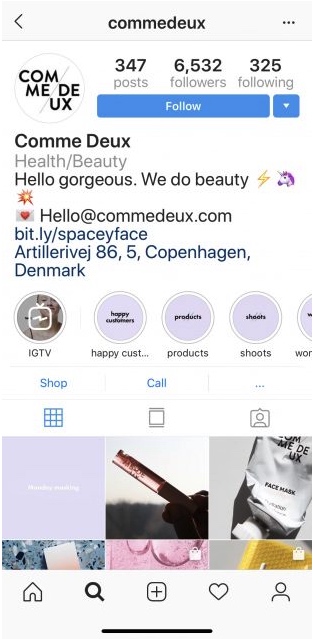
Source: Instagram
Step 2: Link Your Instagram Account To Facebook
The next step is to link your Instagram account to your Facebook page. You only need to do this one time and then you’re set.
Visit the Settings for your Facebook page and click on “Instagram Ads”. Next, click “Log In” and fill in your Instagram login credentials. If you don’t have an existing Instagram account, Facebook will allow you to create one.
RELATED: Facebook Marketing For Dropshipping: Tips To Succeed
You’ll be running all your Instagram ads for dropshipping through Facebook’s self-serve Ads Manager platform. With this tool you have total control over your ads, how they appear and who sees them, along with your advertising budget.
Step 3: Create an Instagram Ad Campaign
Instagram offers several ad formats:
- Photo ads
- Instagram Shopping ads
- Stories ads
- Video ads
- Carousel ads
- Collection ads
- Instagram Shopping ads
- Explore ads
- IGTV ads
Each ad type works for different business goals and has different call-to-action options available. However, most entrepreneurs just starting out with instagram ads for dropshipping stick to the first three; photo, shopping, and Stories ads.
When advertising on Instagram, you also get to choose from several campaign objectives. These are the goals for your Instagram ad campaign that you select. Don’t skip this step! It affects how your ads are optimized and how you pay for them.
While Facebook offers 11 objectives in the Facebook Ads Manager, only the following eight apply to Instagram ads.
- Brand awareness
- Reach
- Traffic
- App installs
- Engagement
- Video views
- Lead generation
- Conversions
The Conversions objective is a solid choice for e-commerce businesses that want to drive sales. It’s important to note, however, that in order to use this objective you must first have the Facebook pixel installed on your website.
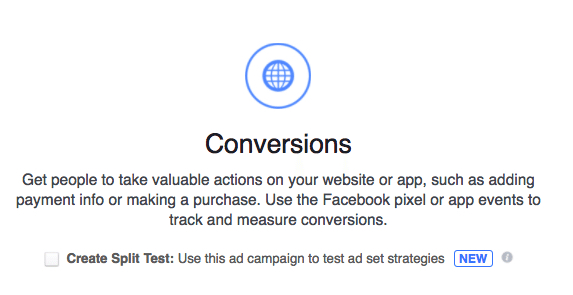
Next, you’ll need to define your audience, placements, budget, and schedule. Instagram ads have all the same targeting options as Facebook. These include targeting based on location, demographics, interests, behavior, lookalike audiences, and automated targeting (let Facebook decide).
Even better, if you have Custom Audiences, you can target those on Instagram. Custom Audiences are groups of people who have already connected with your brand in some way. They might have visited your website, engaged with your posts, or shared their contact info with you.
And finally, you will upload your creatives (see step 4, below). These are the images or videos, content, and call-to actions that go with your campaign.
NOTE: The team at Instagram reviews every promotion to make sure it meets all ad policies of the platform. It’s wise to read these policies first to make sure your ads are approved and so your account won’t be suspended after moderation.
Step 4: Design Your Ad Creatives
Decide which ad format you want to use for your campaign. Be sure your image/video meets all Instagram platform specifications. Check out this helpful guide for the most updated sizing requirements for each one of Instagram’s ad formats.
As a dropshipper, your primary Instagram goal will likely be to promote the products you sell online to get more conversions. We encourage you to test out different types of product images. Try single product vs. multi-product, experiment with lighting, color, text overlays, graphics, and more to see what gets the most engagement from your audience.
But once you find the “look” that works for you, be consistent. It’s important to be concept-driven and on-brand when showcasing products on this visual platform, regardless of the type of ad creative.
What do you want your message to be? What do you want people to think or feel when they see your ad? How do you want people to describe your brand?
Another key thing to keep in mind is that on Instagram, lifestyle imagery tends to outperform product images or videos. Some marketing agencies have gone so far as to note that lifestyle product images (using content and relatable people) outperform images without people 5X on average.
It makes sense. Folks like seeing images of other people they can relate to or be inspired by. This naturally boosts user engagement. So the more organic you can make your images feel in an Instagram feed, meaning they don’t stick out like a sore advertising thumb, the more likely your audience will be to engage with the content.
Here’s some tips for designing ad creatives in the most common dropshipping formats- photo ads, shoppable posts, and Stories ads.
Photo Ads:
Photo ads are the bread and butter of Instagram advertising. You will likely start here, as these are the easiest ads to produce and keep on-brand.
Photo ads appear in a user’s Feed and can take on a square or landscape format. As with all Feed ads, they’ll only be included in a viewer’s browsing experience after they click on a photo.
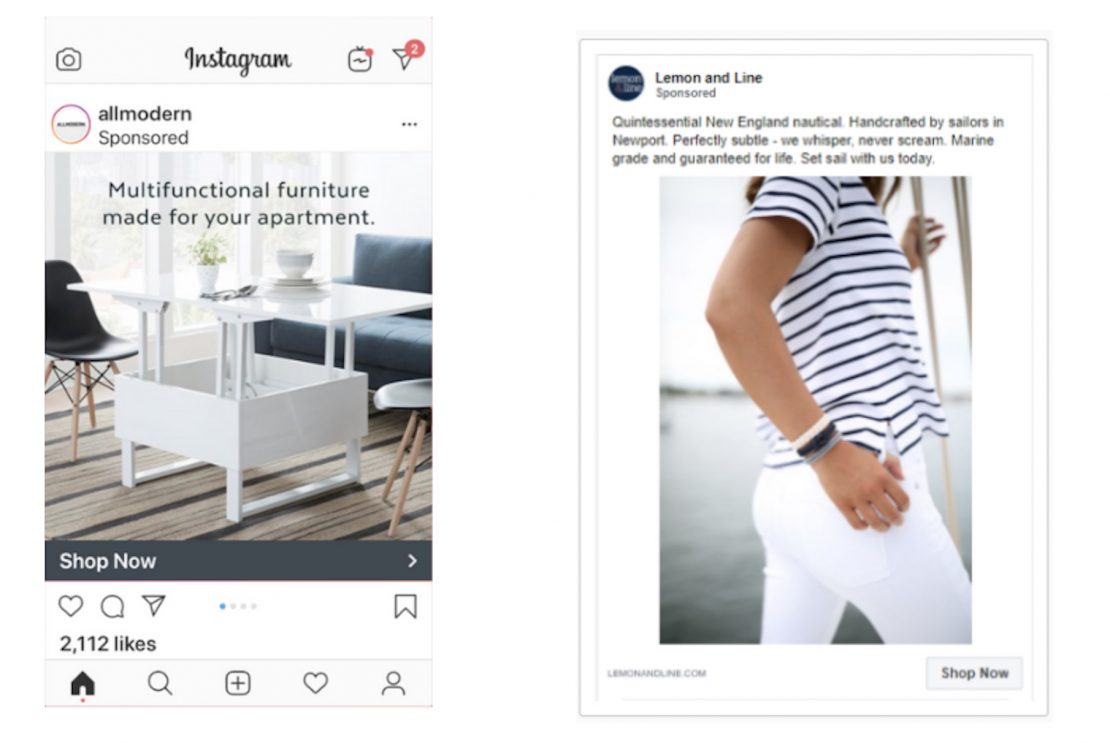
Source: Instagram
Tips for photo ads:
- Apply the same filter(s) to your ad images as you do your everyday posts, so your feed looks consistent.
- Stick within your brand style guidelines (colors, fonts, logo).
- Make sure your ad copy complements your images.
- Keep a strong focal point using your logo or another element of your brand.
- If using photos in a carousel ad, organize the images by theme or a linear storyline.
- Choose well-crafted images that appeal directly to your target audience. You don’t need to be all things to all people, talk directly to your customers.
Shoppable Post Ads:
Once you’re set up with Instagram Shopping, you can tag up to 5 products in the photos to your store catalog. So every time you post to your feed, you can create a shopping experience for your followers and start showcasing the products you sell!
From there, it’s an easy hop, skip, and a jump to promote a popular shoppable post and turn it into an Instagram ad for dropshipping.

Source: Instagram
Tips for shoppable post ads:
- Be sure the product images fit seamlessly with your Instagram feed and your brand’s overall look and feel.
- Make sure you have a natural balance of shoppable posts among your feed, intersperse them with regular on-brand lifestyle posts.
- Consider taking pictures of your most popular products in action, and turning those ‘lifestyle’ images into a shoppable post.
Stories Ads:
Stories ads are limited-time photo or video ads that appear between Instagram users’ Stories. And, since 500 million users check Stories every day, Stories ads are a great way to get your brand noticed.
Stories ads cut through clutter by taking up the whole screen and catching viewers when they’re engaged in a personal space. Since they run just a short time, Stories ads are great for special offers or seasonal products that need to grab a lot of attention, fast.
Stories are also a fun way to share behind the scenes insights about you and your brand. You can use them to inject some personality into your e-commerce store, and help customers build a relationship with you and your brand.
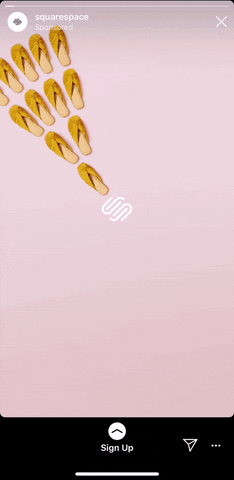
Source: Instagram
Tips for stories ads:
- Consider adding stickers or shoppable links to photo Stories ads.
- Stories videos must be 15 seconds or less, but be sure to show your brand/product and captivate your audience in the first 10 seconds.
- If using video, add captions (you can do this easily in Facebook Ads Manager). Many people watch Stories on mute.
Step 5: Analyze Ad Performance
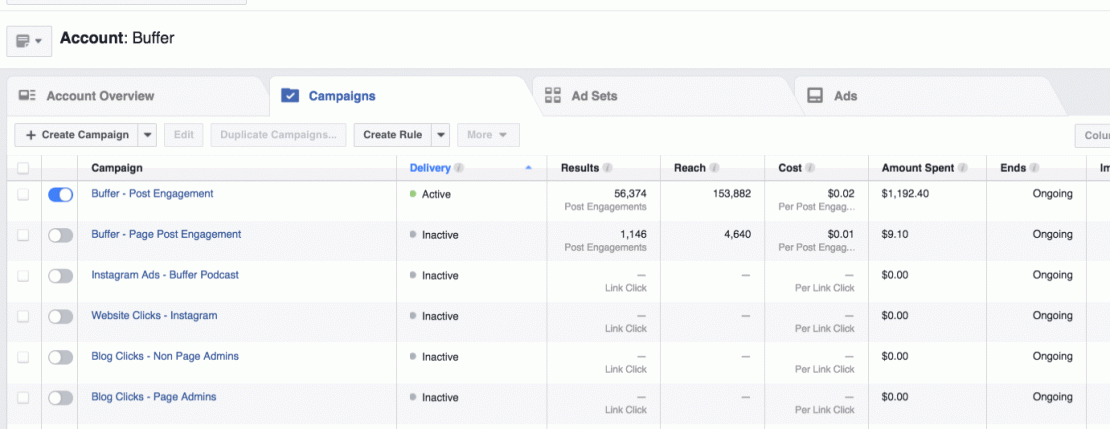
Once you’ve launched an Instagram ad campaign, your work isn’t over! It’s imperative you take the time to monitor and analyze your ads performance to determine which variables are getting you the best results. Within Ads Manager, you can edit your Instagram ad to incorporate split testing or change the targeting parameters, as needed.
Instagram business accounts have an amazing tab called Insights that’s located below every post image. Familiarize yourself with this feature as it contains some seriously valuable intel!
Instagram Insights can help you discover:
- Who your followers are. Learn their average age, most common gender, typical location, and their behavior. You’ll see which posts and stories get the most engagement, which is marketing gold.
- How your ad campaign performed.
You should track important advertising KPIs such as:
- Impressions – total number of times your post was viewed.
- Reach – number of unique accounts who viewed your post.
- Engagement – total number of unique Instagram accounts that liked, commented, or saved your post.
- Referral Traffic – how much traffic your website is receiving from Instagram.
- Profile Views – total number of unique accounts who’ve visited your business profile.
- Conversions – how many people are actually taking the action you want them to, based on who viewed your ad.
10 Tips To Create Winning Instagram Dropshipping Ads
We know that dropshippers often run on a tight budget, which is why we put together this list of tips specifically for you. They include a mix of things you can do both organically and paid, so when you run your Instagram ad campaigns you get the most bang for your buck.
With a little know-how, effort, and creativity – you can both build your brand and design winning instagram ads for dropshipping that convert. So let’s dive right in and share our top ten (10) tips for Instagram marketing success.
1. Optimize Your Instagram Business Profile

Before you ever start running your Instagram ads for dropshipping, it’s essential you get all your ducks in a row. There are a few things you can do (organically) that will boost your account and make your ads more successful.
For example, did you know that an Instagram business profile is becoming the new homepage? More and more consumers are turning to Instagram, instead of Google, to discover brands.
This means you should be spending as much time and effort optimizing and curating a well designed Instagram feed as you would creating A website. Think of your profile like an elevator pitch for your business account. You want to make it count!
Your bio should convey your brand’s unique personality, and show your audience what they’re signing up for by following your business.
A high-quality Instagram business profile should include a:
- Profile Photo: Select an image that is totally on-brand (like a logo) and makes your online store easy to identify.
- Well-Written Bio: Your Instagram bio is incredibly important. It should include a clear description of your business that speaks to your audience. Let them know exactly what you have to offer.
- Link To Your Store: The URL section of your bio is the only clickable link you can add to your page, so use it! This is a great way to drive traffic from your individual posts and stories to your e-commerce store.
2. Grow Your Brand
People buy from brands they trust. And they won’t trust your brand if you start running ads the second you launch your account. That’s like getting married before dating!
Once you open your business account you’ll want to fill it with primary content before running your first promotion. Create a mix of entertaining (neutral) lifestyle posts and product posts designed to appeal to your target audience.
Start building an organic following. See who your competition is following and follow those same influencers. Some of them may follow you back.
Search for hashtags that relate to your brand and follow those hashtags. Then scroll through the posts and follow people posting content that aligns with your niche. Use these same hashtags in your own posts to bring more visibility to your feed.
Share and comment on relevant posts from influencers you follow. Start interacting with the kind of people who would buy your products. Spend some time building your brand’s voice, so people know what type of products and content they can expect from you.
3. Start Testing Organically
The initial brand-building phase is a great time to gather intel to better target your instagram ads for dropshipping once you start running them. Think of the time you spend building your initial Instagram feed as a free testing opportunity.
You ALWAYS want to post images and captions that are on-brand and relate to your dropshipping niche. However, now’s your chance to see what type of posts get the most engagement… before you shell out cash to promote them.
Pick a couple favorite filters and backgrounds, then post product images using the different options. Which ones get the most engagement?
Do your followers respond to uncluttered well-lit product images against a plain backdrop? Or do they prefer more ‘real-world’ images of people using the product out in the wild?
Do text overlays work for your brand, or do simple and clean minimalist images get more likes and shares?
You can test different caption content, tone, and styles also. Do your followers like informational copy? Or do they respond more to humor? Do they want you to talk to them like a friend, or like a subject matter expert in your niche?
Try asking questions or using other prompts, like tag a friend or share this post, to see what works best to get people engaging with your content.
Then pay attention to what works! Identify the best filter, colors, images, caption styles etc. for your audience and start using them consistently. Now you’re building a true Instagram brand, and you’re ready to start running ads and promoting posts.
4. Find And Target Your Audience
Once you’ve built a foundation of organic engagement, you’re ready to tread the waters of paid advertising. Combining your Instagram engagements with Facebook’s ad targeting tools is the one-two punch that leads to higher conversions.
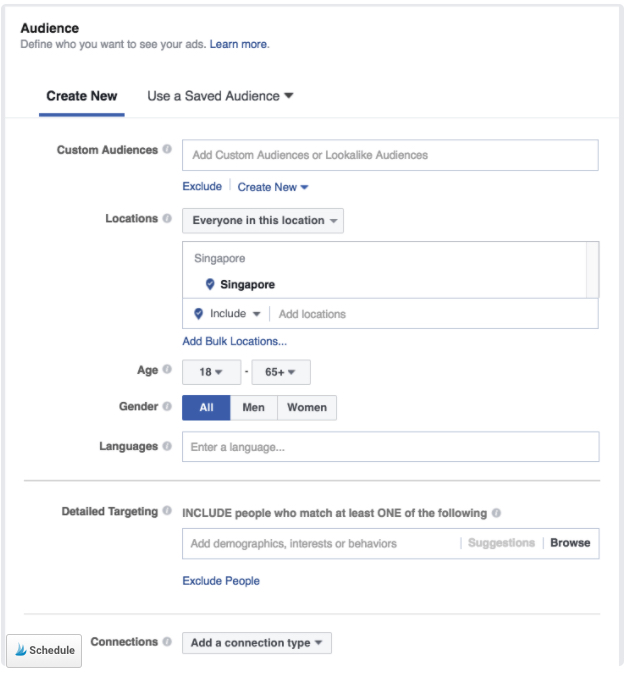
You can do this one of two ways:
- Running retargeted ads to people who visit your website through an Instagram story, post, or ad.
- Creating a custom audience based on Instagram engagement.
Another thing to keep in mind is that running carefully targeted ad campaigns can lead to more conversions. One of the best ways to achieve this is through audience segmentation.
You can use a combination of interest targeting and custom audiences to separate your audience into very distinct niches. Then you develop ad creatives that are extremely relevant to those specific users. If you’re selling organic fair-trade coffee, for example, you would run different ads when targeting eco-conscious shoppers than you would when targeting gourmet foodies.
Your audience may use your product in different ways, or have different buying motivations and pain points. Consider this when targeting and creating Instagram ads for dropshipping to increase conversions.
5. Build A Shoppable Instagram Feed
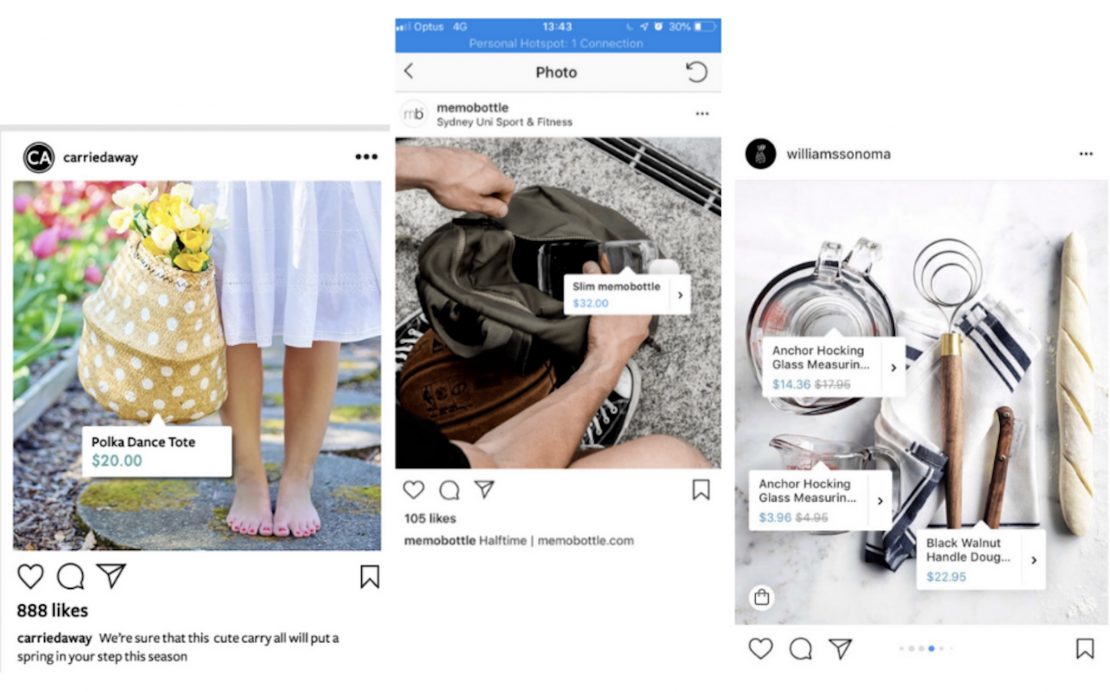
Source: Instagram
Although Google and Facebook have long been shoppable, Instagram’s e-commerce options have been limited. But then, Instagram rolled out a shoppable post feature and it’s a game changer!
When you tag a product, people looking at your post can tap the photo and see the name and price of the item. From there, users can choose to view and buy the product directly from your website. How cool is that?
You can even promote shoppable posts and turn them into shoppable Instagram ads for dropshipping. This streamlined approach to Instagram eCommerce makes for a seamless shopping experience. Prospective buyers only have to look, tap, and buy.
Here’s how to set up shoppable posts for Instagram eCommerce:
Step 1. Create a product catalog on Facebook.
Step 2. Go to the Shop section in Facebook Shopping attributes and upload your products and the URLs of the product pages in your online store.
Step 3. Wait to be approved by Facebook. This can take anywhere from a few hours to a couple of days.
Step 4. Add shoppable tags to your posts. Open the Instagram app and select Settings, then Business, then Shopping. Choose the catalog you created on Facebook and press Done.
Now you’ll be able to tag posts and Stories with products from your catalog. Instagram will allow you to tag up to five products per image (or up to 20 products per Story carousel). Keep in mind when tagging more than one product in a single image, you need to make sure the tags touch the correct item so you won’t confuse potential buyers about which price goes with what.
Once you’ve added all the desired tags, you can tap “Preview,” to see what it will look like. Be sure to include a caption and relevant hashtags. Then share the post with your followers as usual. It’s that easy!
6. Use The Right Hashtags
Hashtags are a great way to help more potential customers find your brand. But don’t read this and go crazy. You don’t want to use too many hashtags at once! Doing so can make your posts look spammy and low-effort.
The ideal number? TrackMaven analyzed 65,000 posts and found that 9 hashtags is the ideal number for highest post engagement. They also found that longer hashtags often perform better.
One easy trick for finding great hashtags is to see which ones are being used by influencers in your niche. Try to find targeted hashtags that get attention, but aren’t used so much your posts get lost.
For example, if you’re selling vitamins and supplements you might see #health and think, that works… but with 131M posts, it’s so oversaturated that it’s not going to get you seen. Whereas hashtags such as #healthcoach #healthyliving #eatclean or #nutritiontips also have millions of views, but are more targeted to specific audiences and are more likely to get your brand found.
Relevance and reach are the most important aspects to consider when choosing hashtags for your business. If you aren’t sure where to start, you can try using a hashtag generator to get a list of potential tags. Then narrow it down to a smaller pool of choices that are most relevant to your ideal customer.
7. Write Compelling Captions and CTAs
Instagram may be a predominantly visual platform but that doesn’t mean words don’t matter. They do matter… a lot.
When writing copy for Instagram ads, it’s important to remember that only a small amount of the text at the bottom of an image will be visible when scrolling on mobile. Viewers initially see only the first 10–15 words of your Instagram caption copy. So make that first sentence count!
You need a strong opening sentence that encourages people to click the “More” button and discover your call to action (CTA). Your total caption can have up to 2,000 characters of copy – but if you don’t grab a user’s attention in the first ten words, they’ll never see the rest of your post. It’s worth spending extra time to get those first few words exactly right.
Good captions accomplish a lot. They can relate to your target audience and get more followers to your Instagram feed.
More Followers = More Potential Customers
When it comes to Instagram e-commerce, great captions tell stories, ask questions to encourage input, attract attention, inspire thought, and even convince people to take actions like visiting your website or checking out a video.
Another thing to keep in mind is that Instagram’s feed ads can’t have a CTA in the image. Instead of overlaying text on your ad photos, the CTA needs to be included in the caption or you can use a button.
There are several different predetermined CTA buttons to choose from such as: Learn More, Book, Shop, Reserve, Start Order, and others. For ads it is absolutely essential you tell viewers exactly what they need to do next. A clear CTA button will do this.
One final thing to note with captions and that is they should always include appropriate mentions. This means mentioning people who appear in images and giving credit to people who provided a photo, whose content you reposted, or who are in some way associated with the story you’re telling.
8. Use Emotions To Sell
According to the Harvard School of Business, 95% of purchase decisions take place subconsciously and are based on emotional factors.
“People do not buy goods & services. They buy relations, stories, and magic.” -Seth Godin-
For e-commerce entrepreneurs, this means that building an emotional connection with potential customers is a must. Luckily with Instagram you can use lifestyle images as a way to build emotional bonds with consumers.
For example, if your dropshipping niche is eco-friendly products, you can tap into people’s desires to save the planet by posting emotional lifestyle images of conservation efforts. This is called emotional marketing, and it works.
Think about it like this, if there were two different ads for the same type of product – one that simply explained the product, and one that made you laugh or cry, which one would stick with you? The second, right?
As an example, say you’re selling a supplement designed to support immunity, what do you think is more compelling to potential buyers? The fact that the supplement contains vitamins C, E, and B6 – OR – how taking something that boosts your immune system will help you stay healthy and strong so you can enjoy life?
And yes, shoppers will compare prices and spend time reading about products, but at the end of the day when it’s time to make a decision, they tend to go with heart over head. Product descriptions are important, but it’s feelings that ultimately convert.
Emotional marketing goes hand in hand with lifestyle photography, and there are five basic emotions you may want to use when creating authentic product photos:
- Happiness
- Sadness
- Fear/Surprise
- Anger
- Empathy/Belonging
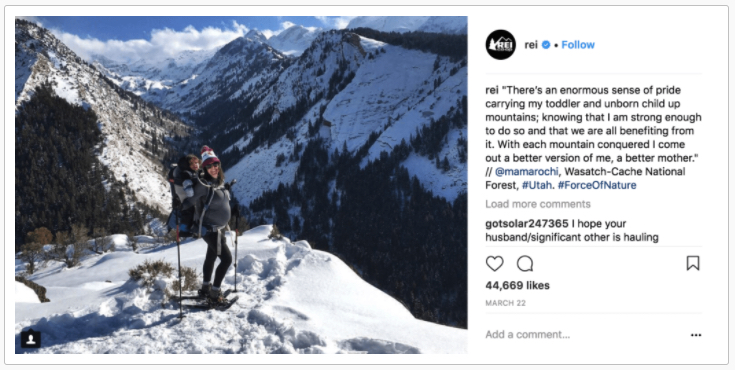
Source: Instagram
And remember, you’re not just selling a product – you’re selling a feeling and a lifestyle. You’re also turning followers into fans.
Another study showed that customers who have an emotional relationship with a brand have a 306% higher lifetime value and are more likely to recommend the company to others. When customers are emotionally connected to you, they’ll reward you with loyalty and advocacy.
9. Develop A Content Strategy
No matter what you sell in your eCommerce store, your Instagram ads for dropshipping need to contain content that is useful, entertaining, engaging and inspiring.
It makes sense to develop a few key content themes for your brand, and then plan and build your creatives around those themes. Some theme ideas you can use to promote your brand include:
- Lifestyle: Show your products in real-world situations to allow potential buyers to visualize how they can use them in their own lives.
- Meet and greet: Let people get to know you and your team’s unique personalities by virtually introducing them to your followers.
- Behind-the-scenes: Show your followers what goes on behind the scenes of your brand. (How you choose products, photo shoots, industry events, etc.)
- User-generated: Share real people’s posts and images that feature products you sell. No one is a better salesperson than a satisfied customer.
- Customer reviews: Highlight positive reviews, testimonials and customer stories to show (not tell) how great your products are.
- Informative: Keep followers “in the know” with posts that explain, teach or show them something new.
10. Punch Up Your Images With Stickers and Filters
Tagging your products with Instagram’s shopping stickers is a great way to promote shopping on stories because you can showcase product details without being spammy or overly sales-y. And the good news is that unlike Instagram Stories swipe-up links, you don’t need to be verified or have 10,000 followers to use them.
You can also use Instagram stories stickers to encourage more engagement from followers and people seeing a stories ad. There are stickers to ask questions, take a poll or quiz, request users to DM you, and more.
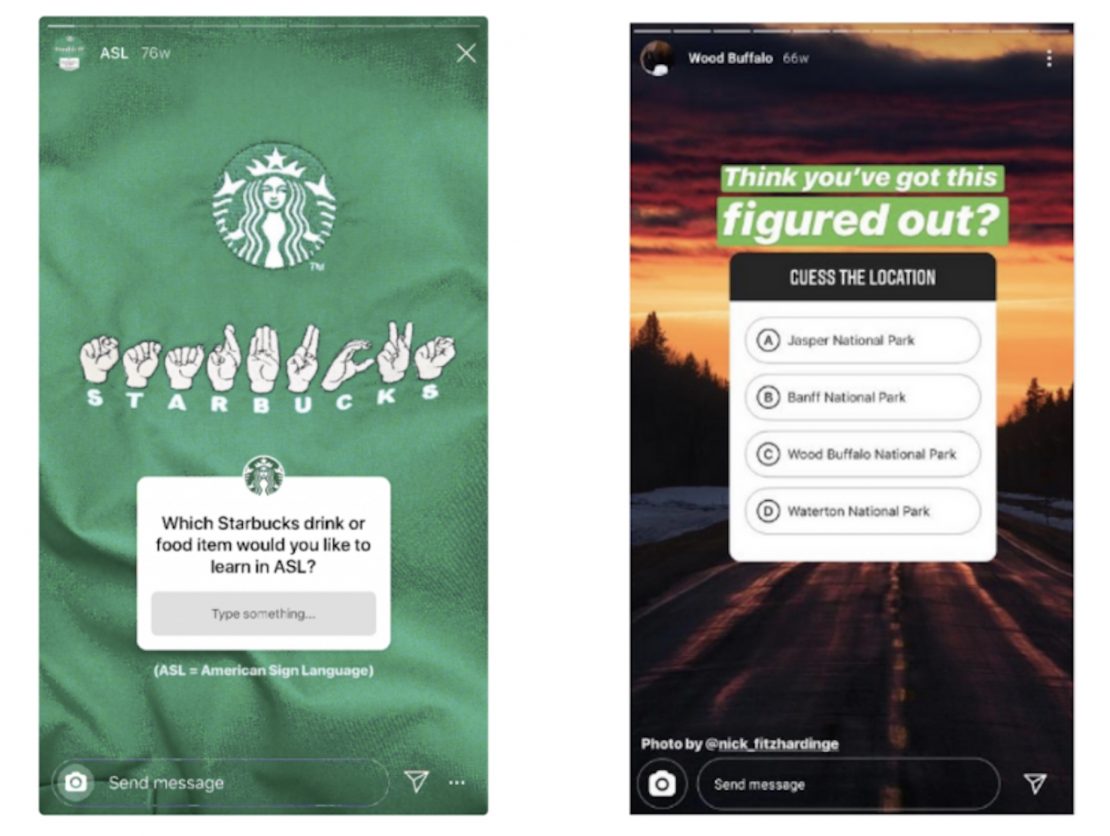
L: Question sticker R: Quiz sticker
All you have to do is open the Instagram Stories camera and either take a photo or video, or select one from your camera roll. Next, tap the stickers button and select the one you want. You can even adjust the color and text of stickers.
You can also use Instagram overlay stickers to bring a little extra color and life to product images. Overlay stickers are graphic designs added to an image or video. Things like rainbows, bright lines, clouds, stars, and flowers are making their way into posts.
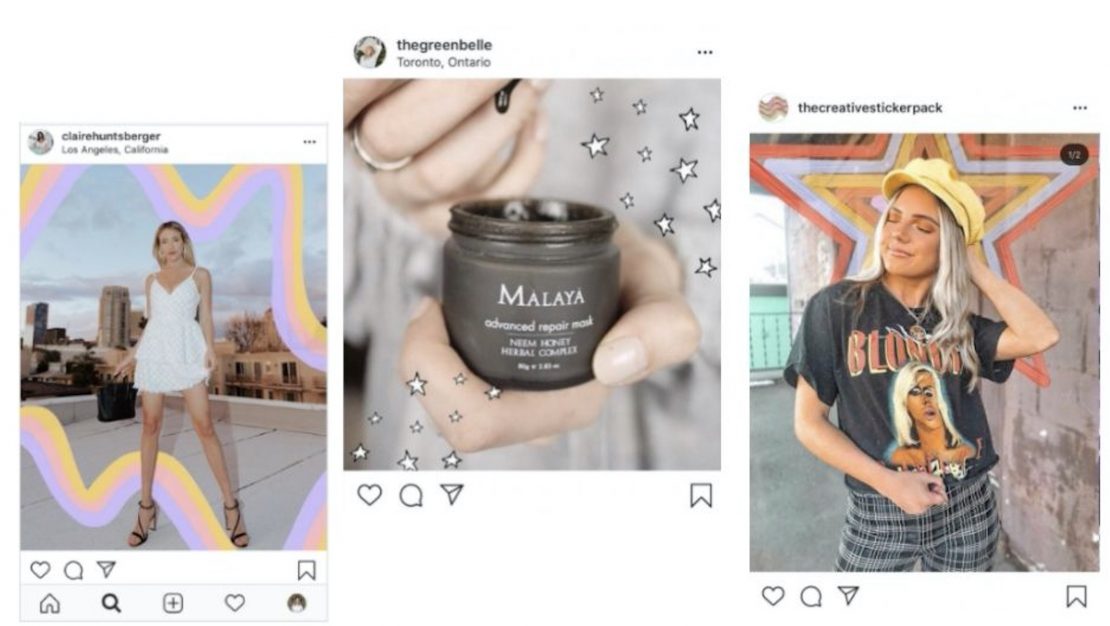
Source: Instagram
And don’t forget about the old standby, Instagram filters. If you choose to use a filter on your images it’s important to stay on-brand and consistent with your choice. You want all your images to look like they belong together in a collection.
Canva analyzed the filters used in over one million Instagram photographs around the globe and ranked them according to popularity. Here are the top three most popular:
- Clarendon: This is a great filter for products. It helps brighten, highlight, and enhance photos, giving them a bright bold look.
- Gingham: This filter has a very nice vintage feel and is good for nostalgic type images.
- Juno: This filter adds saturation and warmth, great for lifestyle photos.
While popular filters are a safe choice, every photo is unique so be sure to choose the filter that showcases your product in the best light and aligns with the overall look and feel of your brand.
Conclusion:
Instagram ads, when done right, can really boost sales in your dropshipping store. The key is to not give up after one or two lackluster ad campaigns.
Keep tweaking your creatives and testing until you find the right combination of images and copy to engage your target audience. It’s out there!
And while there’s typically a lot of legwork involved to develop your first profitable paid advertising campaign, once you’re up and running your ads will be quietly attracting the attention of interested people who might become your next customers.
If you’re thinking of selling natural and organic grocery, beauty, or household products in your dropshipping store, GreenDropShip offers an extensive inventory of name-brand items.
Be sure to check out our full online catalog, we carry over 20,000 products in a variety of niches. With such a large selection of top quality items, we know you’ll find something your customers will love!
